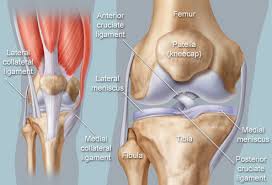Remedial Massage and Knee Pain
Knee pain can literally stop us in our tracks. When we lose the ability to move around the way we used to it can really affect our lives in so many ways. In some cases where there is extensive ligament damage or severe degenerative arthritis, surgery may in fact be required. However even if there is; some ligament damage, or arthritic type degeneration, that in itself may not be the direct cause of your knee pain. It is possible that active trigger points or knots in the muscles around your knee may actually be the cause of your pain.
Knowing which specific area around our knee that we are experiencing the pain can give us clues as to the possible cause of our problem.
For example;
-
Pain in the inner part of the knee may be caused by a weakened vastus medius muscle, in conjunction with an overly tight vastus lateralis. This muscle imbalance can pull the knee out to the side resulting in knee pain. Myofascial dry needling can be used to wake up the weakened muscle as well as resolving any associated active trigger points. At the same time the use of deep remedial massage can assist in releasing the overly tight vastus lateralis muscle. Another muscle group associated with medial knee pain are the adductor muscles. Again ones goal is to release active trigger points or knots in the region.
-
With outer knee pain, the most common culprit is an overly tight “illiotibial band” or ITB for short. As well as regular professional remedial massage therapy, the use of a foam roller for self massage at home is invaluable for resolving ITB problems. With outer knee pain is also worthwhile to look for active trigger points in the vastus lateralis muscle as well.
-
For pain in the front part of the knee active trigger points in the rectus femoris muscle are often to blame, again myofascial dry needling or remedial trigger point massage should resolve this problem given time.
-
Pain in the back of the knee can be caused by active trigger in the muscles situated directly over the back of the knee such as popliteus or the plantaris muscle. Alternatively we find that active trigger points in the hamstrings are sometimes to blame, or in some cases even trigger points in muscles of the lower leg such as gastronemius or soleus could be the source of the problem.
Remedial massage therapy and myofascial dry needling used together in combination for the treatment knee pain is a safe, effective and non-invasive way of resolving this common problem.


